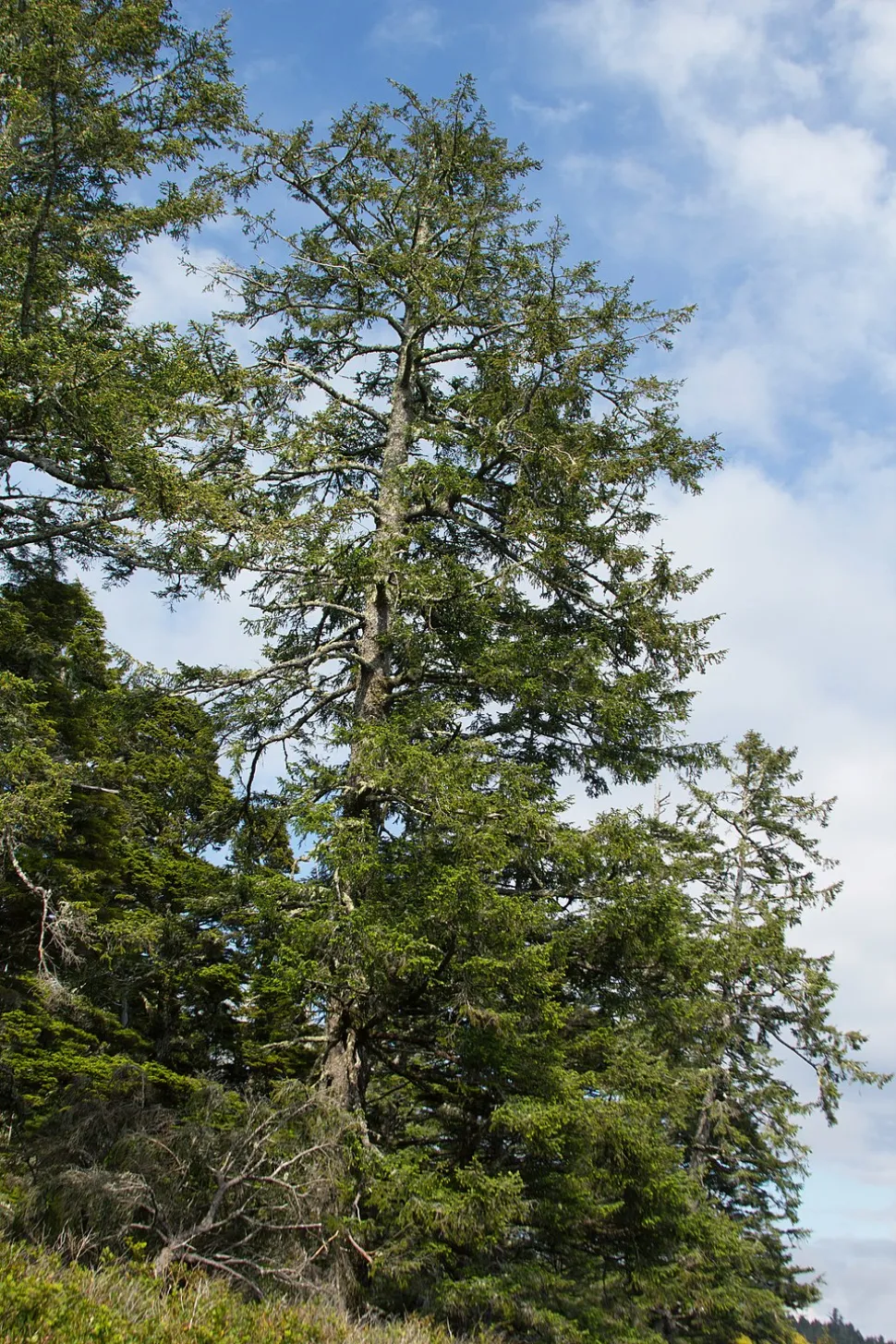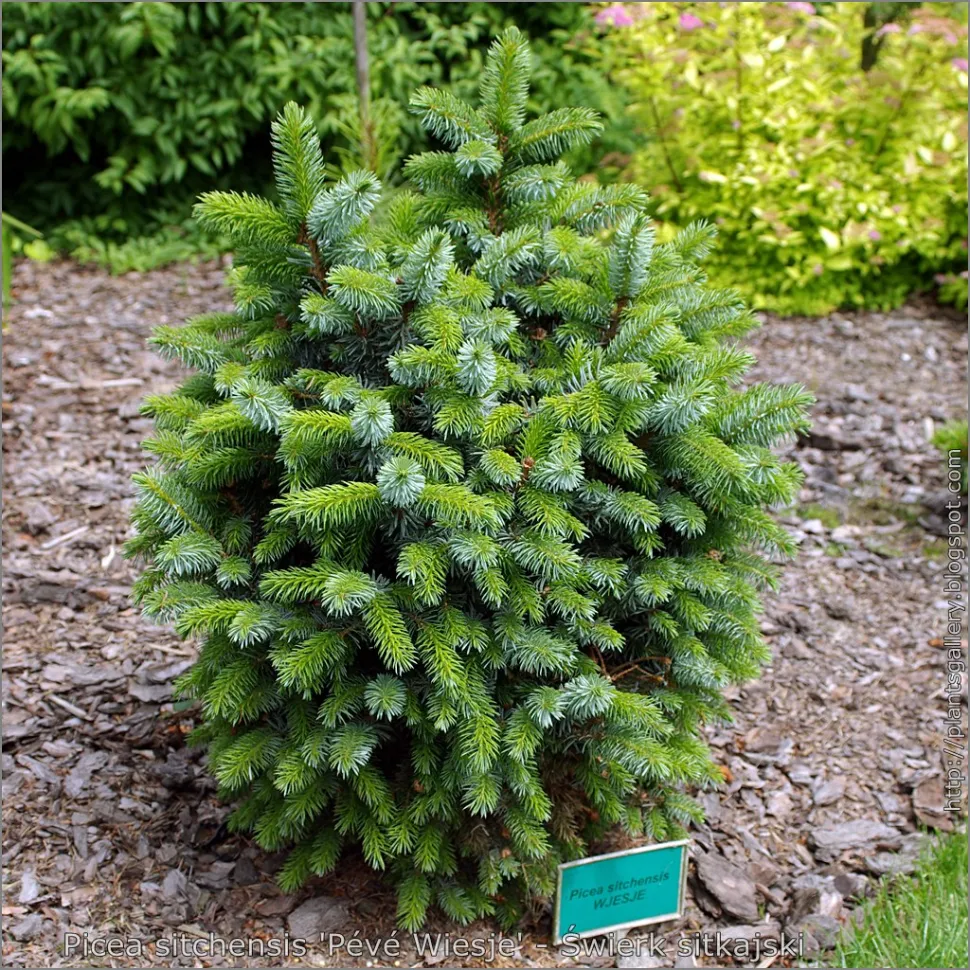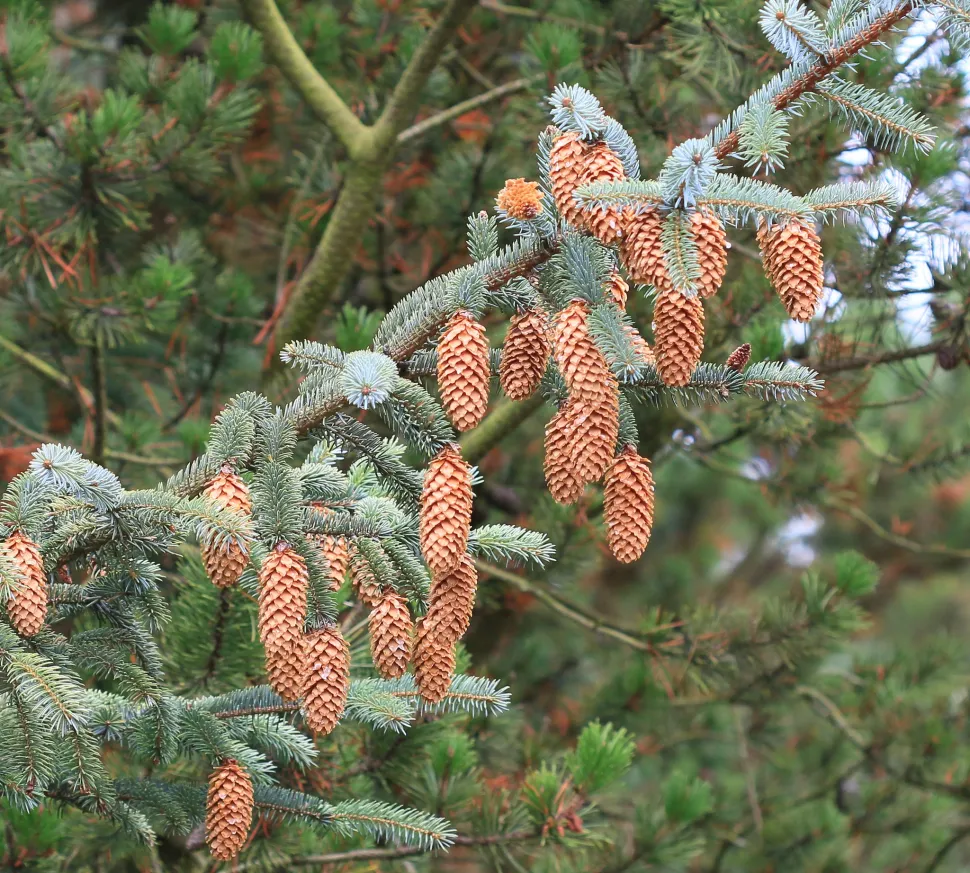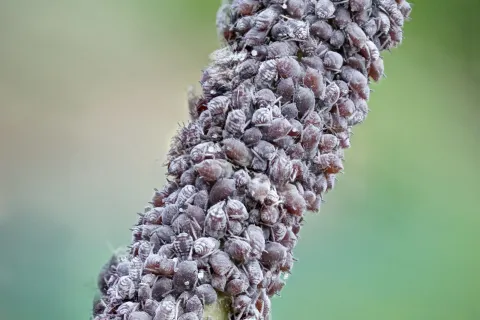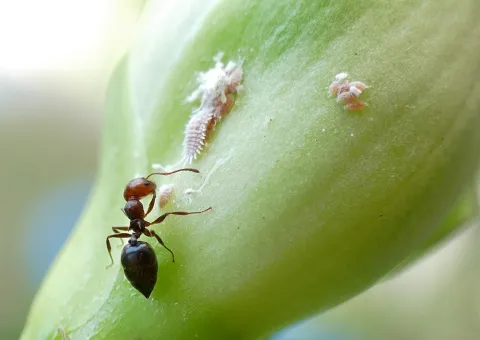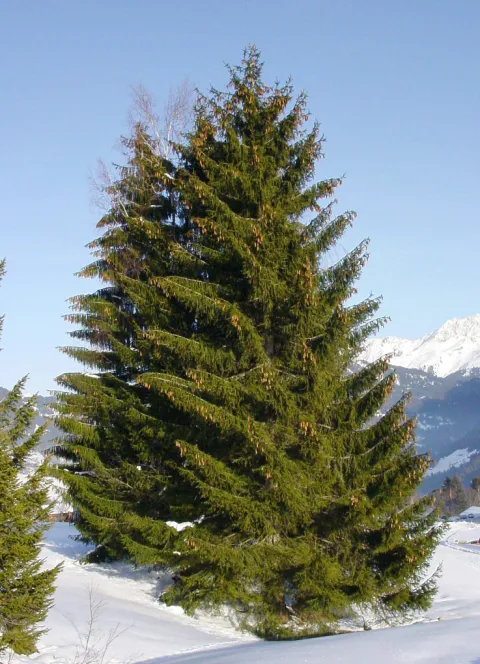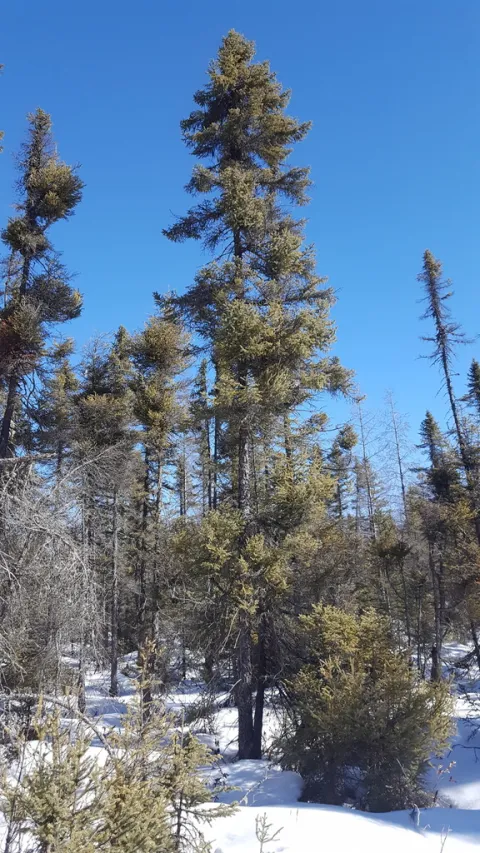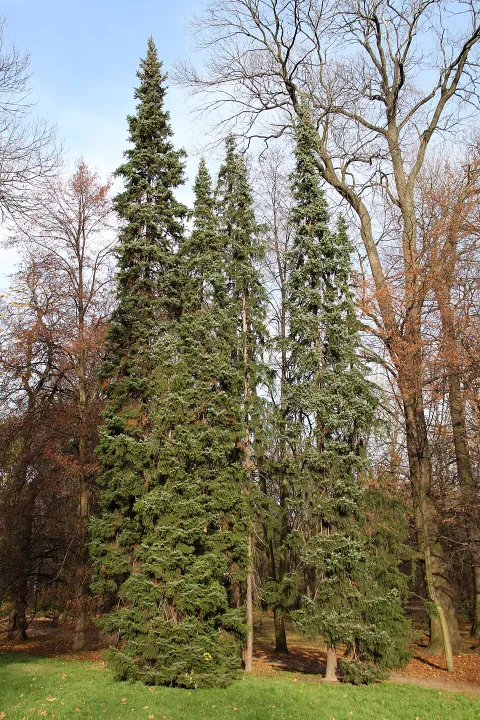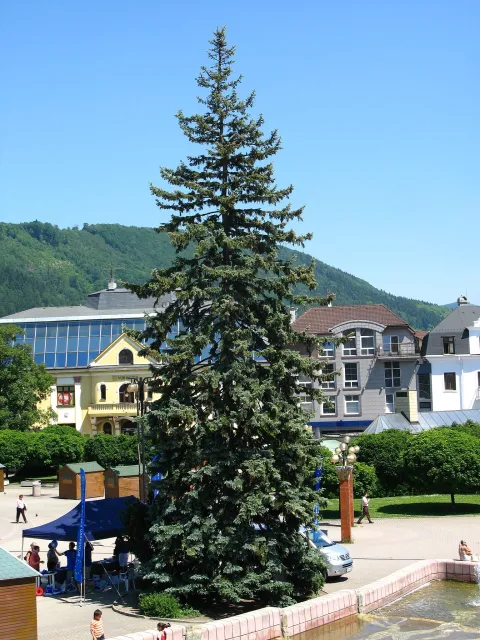Picea sitchensis, Sitka spruce
In Alaska, in the province of Sitka, grows one of the tallest trees in the world: the Picea sitchensis. This giant of the Pinaceae family extends as far north as California and can also be grown at other latitudes, provided the climate remains temperate and sufficiently humid.
How to recognize Picea sitchensis, the Sitka spruce?
Taller than picea pungens, Picea sitchensis averages 70 meters in height. However, some specimens exceed 100 meters. The evergreen tree adopts a conical habit when young, then a cylindrical one as it ages.
The trunk of Picea sitchensis is covered with thin, scaly bark,which is grey on the outside and red on the inside. In older conifers, the base of the trunk is bare. The first branches are 40 meters above the ground.
The pointed needles are dark blue-green on top. They are crossed by two or three bands of white stomata. The blue underside is crossed by two lines of stomata.
The cylindrical, hanging cones are five to nine centimetres long. Initially reddish-green, pine cones turn brown as they mature. They contain black, winged seeds.
Sitka spruce is not toxic to humans or animals. Nevertheless, its prickly needles can cause injury if touched or swallowed.
Our maintenance tips
Consider the growth of your Picea sitchensis before planting it. The largest specimens exceed several dozen meters in height and should therefore be installed where they won't get in anyone's way.
Watering
Water when the substrate is dry on the surface, for about three centimeters. Use non-calcareous water, such as rainwater, filtered water or mineral water.
Don 't let water stagnate in the planter or saucer, as it may rot the roots.
Spray
Your Picea sitchensis is a tropical plant. It appreciates humidity. Spray its foliage with water at room temperature.
Avoid calcareous water, which leaves white marks on the leaves. Prefer rainwater or filtered water.
Repotting
Choose a pierced terracotta pot. This material ensures more uniform evaporation of water and prevents root rot. The container should be deep so as not to topple under the weight of the plant and allow your Picea sitchensis to grow. Gravel or clay balls can be placed at the bottom to improve drainage.
Pour in a layer of rich potting soil, such as potting soil for acid-loving plants. Plant your Picea sitchensis. The root ball should be three to five centimetres below the edge to form a watering trough. Add potting soil.
Press down and water until the water runs off through the drainage holes to encourage rooting.
Fertilization
To promote the growth of your Picea sitchensis, apply fertilizer in spring and summer.
Fertilize your Picea sitchensis with a conifer fertilizer once a month. Follow the dosage and manufacturer's instructions to avoid damaging the foliage.
Prune
Your Picea sitchensis does not need pruning. On the contrary, pruning could be detrimental to its growth.
You can, however, remove dead branches in early summer using a clean, sharp tool, such as pruning shears.
Plantation
Soak your Picea sitchensis to rehydrate the root ball.
Meanwhile, dig a hole twice the size of the root ball. Plant your Picea sitchensis. The rootball should be level with the soil. Fill in with a mixture of garden soil and universal potting compost. You can add fertilizer if your soil is poor.
Press down and water thoroughly to help the plant take root.
Seedling
Your seeds are more likely to germinate if you cold stratify them. Do this in winter so you can sow in spring.
Fill an airtight bag (e.g. A freezer bag) with potting soil for sowing and planting. Moisten the substrate. Bury your seeds in the potting soil, seal the bag and place it in the fridge for two months.
Check your mixture regularly to make sure it doesn't rot and remains moist. If any seeds germinate, you can remove them for planting.
Check your mixture regularly to make sure it doesn't rot and remains moist. If any seeds germinate, you can remove them for planting.
Pour seedling and planting soil into cups. Plant your seed a centimetre deep. Spray the substrate to moisten it.
Place your seedlings in a bright spot where the temperature does not exceed 15°C.
Diseases / Threats
Information
| Family | Pinaceae - Pinaceae |
| Type | Picea - Picea |
| Species | Picea sitchensis - Picea sitchensis |
| Lifecycle | Perennial |
| Foliage | Evergreen |
| Exposure | |
| Substrats | |
| Planting methods |
Open ground In pots In tubs |
| Category | |
| Tags |
Beginner Rustic |
| Origin |
North America |
| Hardiness (USDA) | 6a |
| Leaf color |
|
| Flower color |
|
| Fruit colors |
|
Discover plants from the same family
